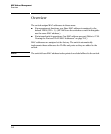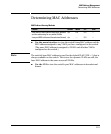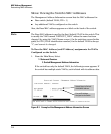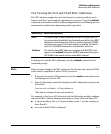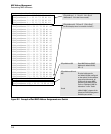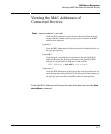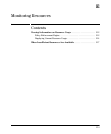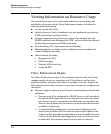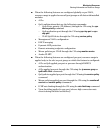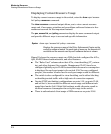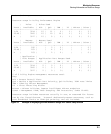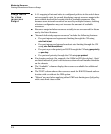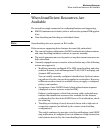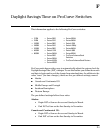
Monitoring Resources
Viewing Information on Resource Usage
Viewing Information on Resource Usage
The switch allows you to view information about the current usage and
availability of resources in the Policy Enforcement engine, including the
following software features:
■ Access control lists (ACL)
■ Quality-of-service (QoS), including device and application port priority,
ICMP rate-limiting, and QoS policies
■ Dynamic assignment of per-port or per-user ACLs and QoS through
RADIUS authentication designated as “IDM”, with or without the optional
identity-driven management (IDM) application
■ Virus throttling (VT) using connection-rate filtering
■ Mirroring policies, including switch configuration as an endpoint for
remote intelligent mirroring
■ Other features, including:
• Management VLAN
• DHCP snooping
• Dynamic ARP protection
• Jumbo IP-MTU
Policy Enforcement Engine
The Policy Enforcement engine is the hardware element in the switch that
manages quality-of-service, mirroring, and ACL policies as well as other
software features, using the rules that you configure. Resource usage in the
Policy Enforcement engine is based on how these features are configured on
the switch.
■ Resource usage by dynamic port ACLs and virus-throttling is determined
as follows:
• Dynamic port ACLs configured by a RADIUS server (with or without
the optional IDM application) for an authenticated client determine
the current resource consumption for this feature on a specified slot.
When a client session ends, the resources in use for that client become
available for other uses.
• A virus-throttling configuration (connection-rate filtering) on the
switch does not affect switch resources unless traffic behavior has
triggered either a throttling or blocking action on the traffic from one
or more clients. When the throttling action ceases or a blocked client
is unblocked, the resources used for that action are released.
E-2



